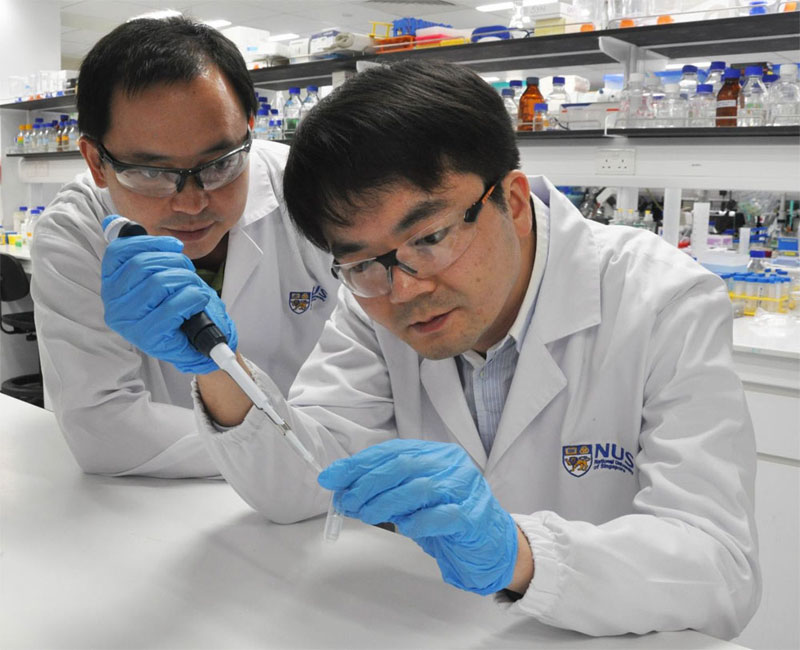
Photosensitizer Enhances The Anticancer Properties of an Antimalarial Drug
Scientists have shown that the anticancer properties of artemisinin, an antimalarial drug that is also a promising alternative cancer treatment, could be enhanced potentially tenfold when used with the photosensitizer aminolaevulinic acid (ALA). When exposed to light, ALA leads to the generation of free radicals that can kill cells.
A team from the National University of Singapore (NUS) discovered that a combination of artemisinin and ALA could kill colorectal cancer cells and suppress tumor growth more effectively than administering artemisinin alone.

NUS scientists discovered that a combination of artemisinin, which is a potent antimalarial drug, and aminolaevulinic acid, which is a photosensitizer, could kill colorectal cancer cells and suppress tumor growth more effectively than administering artemisinin alone. This novel combination therapy could also have fewer side effects. Dr. Lin Qingsong (left) and Dr. Wang Jigang. Courtesy of National University of Singapore.
A previous study by the team showed that artemisinin is activated by heme, a component of hemoglobin. The team’s current study shows that cancer cells have higher heme levels compared to noncancer cells, and that upon activation in cancer cells, artemisinin can attack more than 300 proteins, many of which are essential to the cancer cell’s survival.
Researchers further found that the addition of the light-sensitive molecule ALA, a clinically used heme synthesis precursor, can increase heme levels in cancer cells, further strengthening the anticancer activity of artemisinin. While significantly enhancing the killing effect of artemisinin against colorectal cancer cells, the combination of ALA and artemisinin had minimal effect on noncancer cells.
The artemisinin/ALA combination therapy was tested in a mouse xenograft CRC model, and found to be more effective than artemisinin monotherapy. Researchers demonstrated the efficacy of the combination therapy in cancer cell lines as well as animal models.
“Artemisinin and ALA are both existing drugs that are well tolerated by the human body. As such, this promising cancer treatment could have fewer side effects,” said Dr. Wang Jigang.
Professor Shen Han-Ming said, “Having developed a better understanding of the anti-cancer activity of artemisinin in colorectal cancer, we will also be testing this combination treatment on other cancer types, such as liver cancer.”
The research was published in ACS Central Science (doi: 10.1021/acscentsci.7b00156).
Published: September 2017